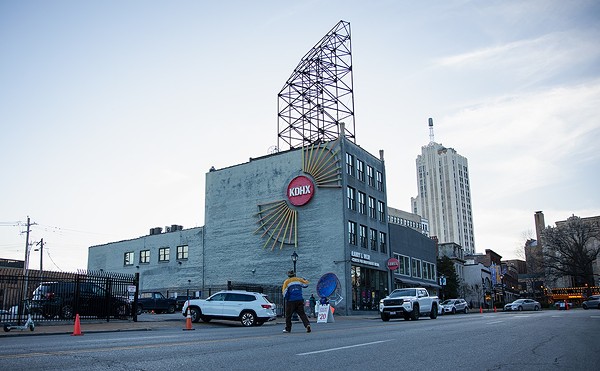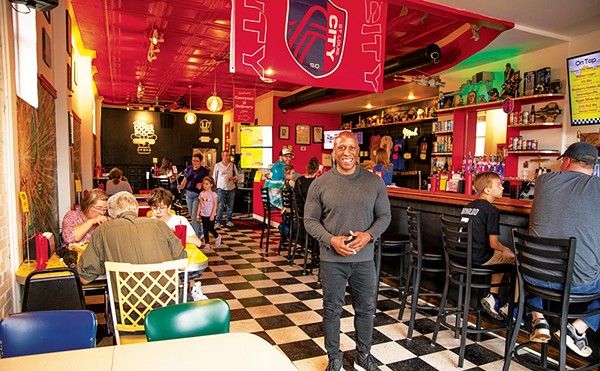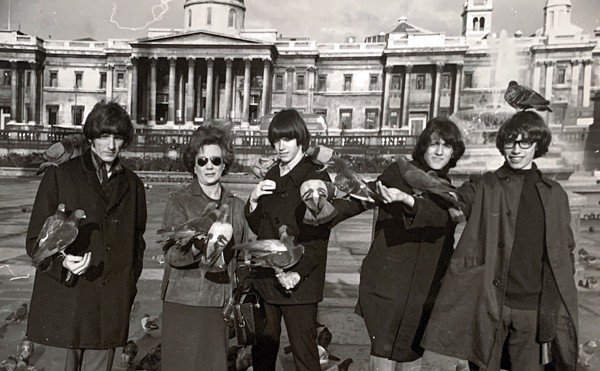Cajun music bears the marks of diaspora and exile, immigrant joys and ancient despair. Its home is the farmlands, plains and marshes of Louisiana, of course, but as far as it has wandered -- every night, there's at least one band in some bar in some city with accordions and fiddles that spin out the tunes -- genuine Cajun music has preserved a lilt of loss within the furious rhythms. When the Acadians, who refused to pledge allegiance to the British king and refused to be dominated by the French, were expelled from the eastern province of Canada in 1755, they brought the old songs and rhythms with them. They tried to settle all along the New England seaboard, as well as throughout the South and on Caribbean islands, until finally taking root in southwest Louisiana, already a melting pot for Spanish, French, African and Anglo cultures. Over time, they gave a new identity to the bayou and changed the course of American popular music for good.
Tribute albums come and go like so many souvenirs of fad and fashion, and separating the banal from the brilliant is a full-time job. When a genuinely original and exciting homage comes along, it's likely to slip through the cracks of a popular culture surfeited on remakes. Evangeline Made is a modest and memorable tribute, a refreshing introduction to the songs and styles of Acadian culture and one of the best albums so far this year. Ann Savoy -- a principal member of the Magnolia Sisters and the Savoy Doucet Cajun Band, as well as a historian and advocate for Cajun music and culture -- produced the album, which will be released in early March. Savoy was born in St. Louis, grew up in Virginia and now makes her home, along with husband and accordion-maker Marc Savoy, eight miles outside Eunice, La.
"Most people have this fantasy of the bayou with alligators," Savoy says, "but where we live is all huge, flat, grassy fields, with oaks covered in moss. I've lived here 26 years. I met Marc at the Wolf Trap folk festival in Washington, D.C. I was really into French at the time. I was a French major, and ever since I moved down here I've been documenting the music and culture in photographs, books and recordings. My earliest exposure was while I was still in Richmond, Va., when a friend of mine had given me a 45 of Clifton Chenier and I couldn't believe how a piano accordion could rock out, and that wild French he was singing, that mixture of Creole and French. When you live in France and hear the music the French play, it's very civilized. When I heard this wild French stuff, it blew me away."
The wild heart of Cajun music beats in counterpoint to the often sprawling narratives of French drinking songs and folk ballads. In "Ma Mule," sung on the album by David Johansen, the Acadian landscape and language dovetails with a primal blues archetype -- the mule tale -- and concludes, as so many Cajun songs do, with a melancholy image of home: "I took two gulps and three large drinks/I'm going to my house, full of sorrow."
"There's still drifting around here the old ballads that came from France," Savoy says, "that came to this area through Canada. You'll be so shocked hearing traditional French groups doing songs that have the same words as the old Cajun ballads here. The people who live here, out in the middle of nowhere in a field in a little shack, they have no idea of their roots. They can't speak English, they can't read or write, and they're singing these songs from France in the 17th century, all the words from these long ballads. It's totally an oral tradition. None of the music is written down. They learn the songs by ear and learn their instruments by fiddling around."
Except for an early attempt to notate the music in 1934, Savoy was one of the first to transcribe the music, collect the songs and trace the history. "Some of the other roots of the music are the old-time fiddle tunes that drifted in before radio, brought in by travelers from other areas. There's Irish, a little bit of German polka, which is where the diatonic accordion came from. Then as soon as radios came into the area, people started translating Jimmie Rodgers and Carter Family songs into French. I think 'Blues de Bosco', which Rodney Crowell sings on the tribute, is a Jimmie Rodgers song. Nick Lowe does 'Don't Stop the Music,' which was a George Jones song. The Cajuns love George Jones!
"Some people, when they hear Cajun music, say it sounds like country music," she continues. "I've never thought of it as country. Cajun music has this wild, haunting thing about it. It may have some roots in country music, but it doesn't sound country anymore."
Maria McKee knows something about that. McKee, who made a name with roots rockers Lone Justice and has gone on to pursue an ambitious pop-rock vision, contributes to two old ballads, "Ma Blonde Est Partie" ("My Blonde Left") and "Tout un Beau Soir en Me Promenant" ("On a Beautiful Evening While Out Walking"). "My love of Cajun music goes back to those recordings, which I've had for a long time," McKee says. "My family is from the same region that the Cajuns migrated from, Breton, and that song 'Tout un Beau Soir' came from that area. It's just a drinking song. A man goes out into the woods and meets a shepherd girl, and they have a drink together."
For her part, McKee, one of the most seductive and skilled singers of her generation, sounds right at home with the curling inflections of Cajun French. "That's thanks to Ann," McKee says. "She worked really hard on the pronunciation. I grew up speaking French, but the Cajun pronunciation is very different." Evangeline Made may feature a trophy shelf of rock and country celebrities -- including Linda Ronstadt, Lowe, Richard and Linda Thompson, Patty Griffin and John Fogerty -- but the 14 songs are threaded together by the Cajun dialect (all the songs are sung in French), the grooving bellows of Marc Savoy's accordion, Ann's unremitting rhythm guitar and lots of boiling-point fiddling. The sound is mostly spare and vigorous, with flashes of electric guitar here and there and an emphasis on voices that find melodic possibilities in the language of the Acadians.
"I didn't want it to sound like it was recorded in a library," Savoy says. "I wanted it to be vibrant and alive today and yet not change it so much that it isn't recognizable as Cajun music. I'm a little concerned about the music today. There's a lot going on, a lot of young bands, but there's a bit of a trend to Americanize it. They're going to kill it if they don't watch out. Zydeco, the black French music, has gotten to be very simplified and almost nursery-rhymed. Some of the artists are really going Nashville, but there's also the preservationists who are still doing gorgeous traditional music, reviving it. It seems sometimes that everybody is trying to homogenize things. But why? It's fun to hear new ideas, but you don't want to change the music into a single blend. If everywhere you went things sounded the same, it would be sad."





